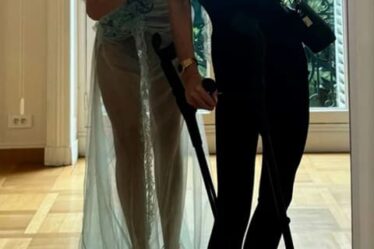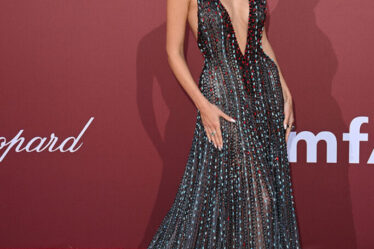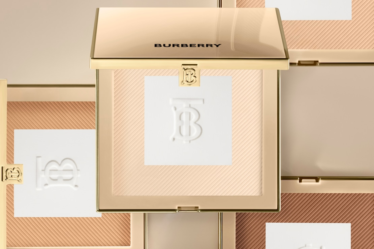
PARIS — Seán McGirr’s debut show at Alexander McQueen, one of the season’s most anticipated shows, was inevitably one of its most controversial, because Lee McQueen himself was the biggest most of all: the most significant designer of modern times. Since his death in 2010, his legacy has been nurtured and enhanced by his right hand Sarah Burton who has made the brand a byword for exquisite craft. As the first “outsider” to be unleashed on that legacy, 35-year-old McGirr was confronted with a formidable task that may be thankless, initially at least, if the fury of Saturday night’s keyboard warriors is any gauge. He seemed to be anticipating as much in a preview last week when he quoted Lee’s own response to criticism: “I’d rather people hated what I do than not give a shit about it.” But, taking a longer, more rational view, McGirr’s debut pretty much realised his own ambition, which was to bring McQueen back to its raw urban roots, when Lee was still mastering his craft, before all the spectacles, when the extravagance was still purely emotional.
The location — a cold, damp, concrete husk of a building almost an hour’s drive from the centre of Paris — certainly set the tone there. So did McGirr’s moodboard, with its images of McQueen’s earliest shows “Banshee” and “The Birds.” A piece from the latter — the famous clingfilm dress — was the starting point. “What was Lee trying to say?” McGirr wondered. The twisted simplicity of the look, its “compression,” registered with him as something ineffably modern and new. So he opened the show with his own version, a fitted, draped tube of laminated jersey. Garbage bag rather than clingfilm.
McGirr was entranced by McQueen’s smash’n’grab iconoclasm, the way, for instance, he ran dirty old tires over the tailoring in “The Birds” to break it down. His response to that was a T-shirt and a dress built round smashed windshields from a car dealership in Dagenham. Another dress of broken crystal featured a hectic effect created by the incorporation of shattered tail lights. There were also skirts and shirts cut from a black silk nylon that was intended to duplicate tarpaulin. Improvising with industrial detritus, with found objects, felt “very London” to McGirr. For one look, he found an old mesh toile from the 90s that had never been used and “trapped” it in layers of tulle.
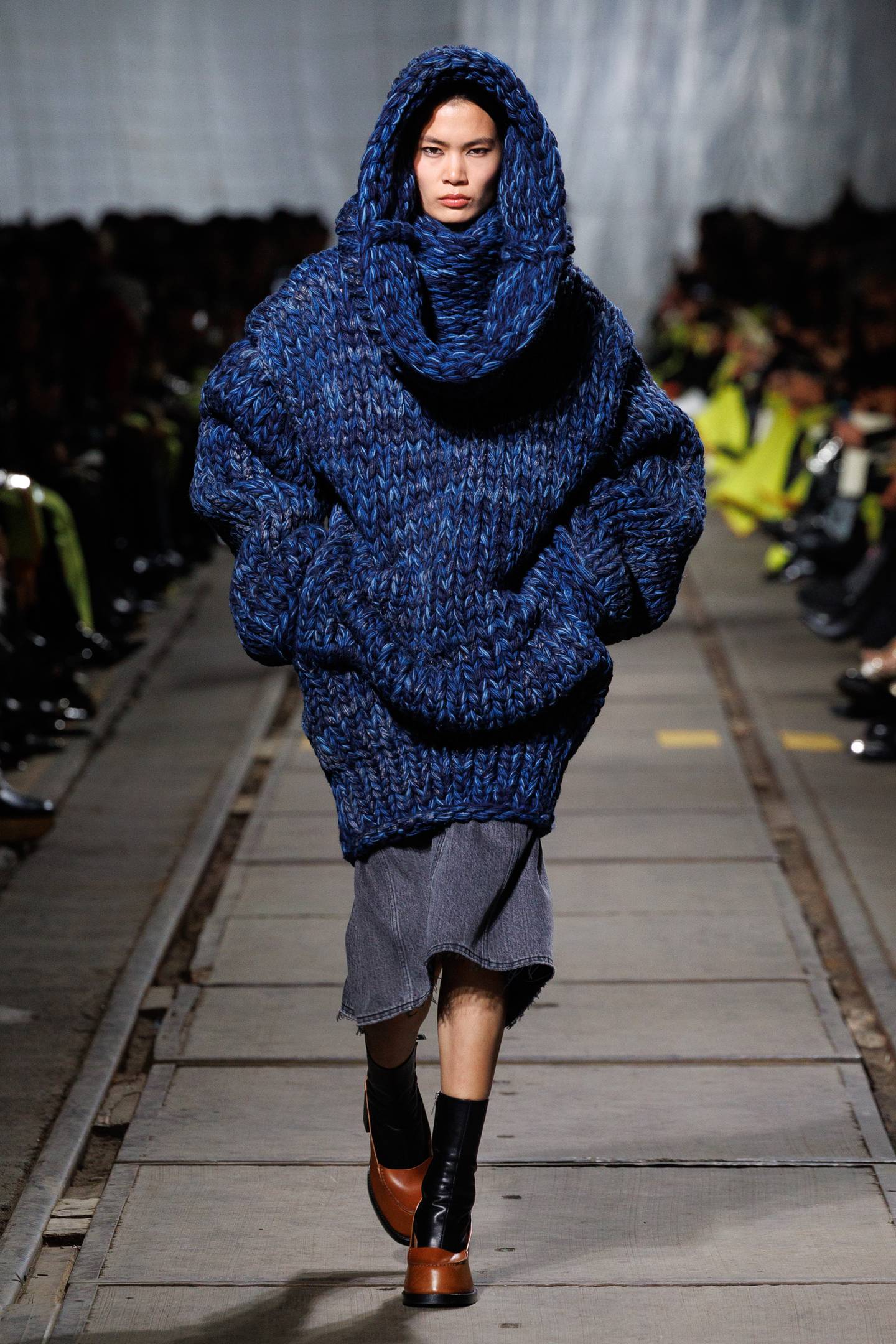
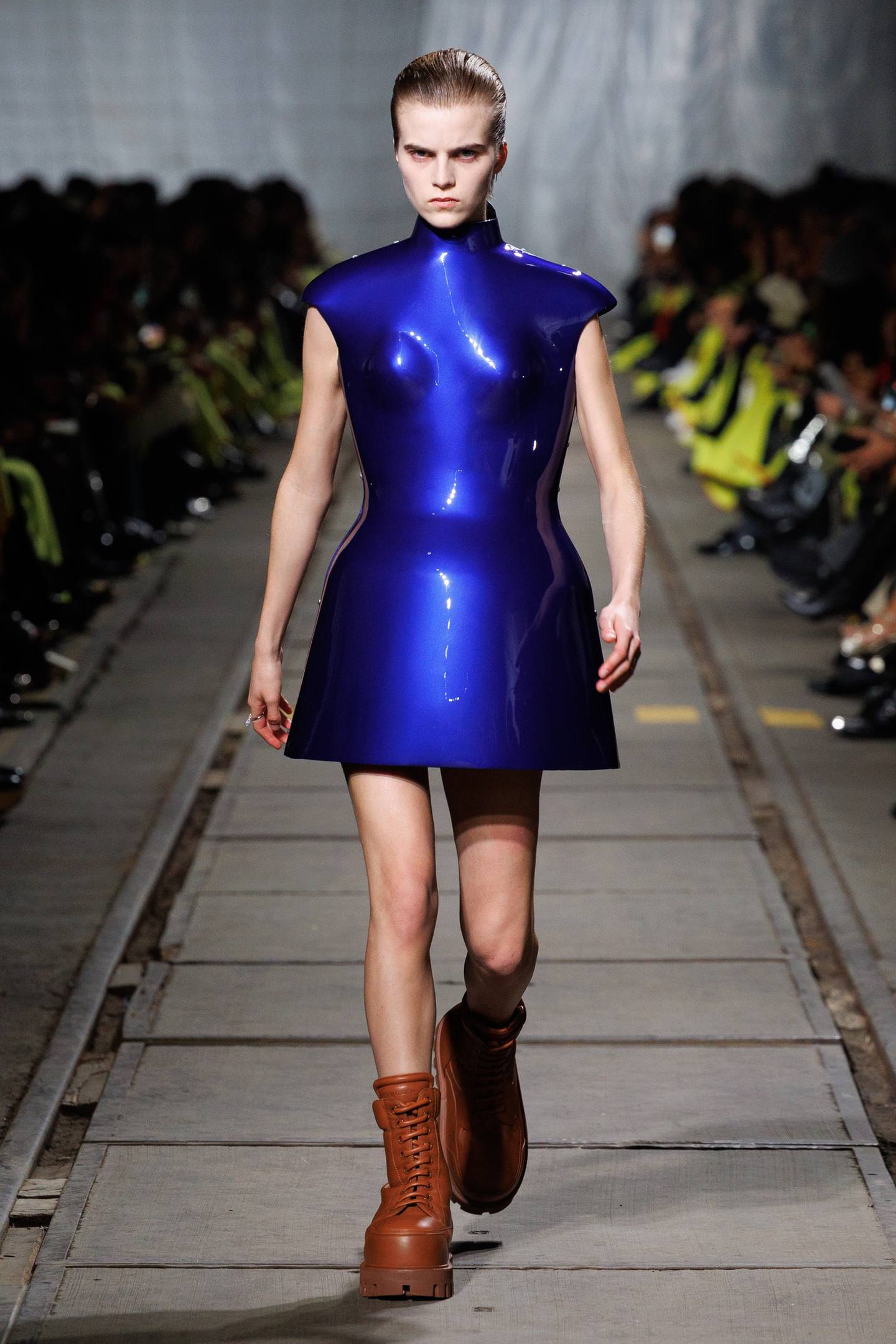
McGirr never met McQueen, but he has an instinct for his ghosts. The urgency of the models reminded me a bit of Laura DePalma, whose fierce, confrontational walk in those early shows was an unforgettable extension of Lee’s own attitude. There was an echo of an East End gangster or two in the men’s broad-shouldered leather coats, tightly bound (more “compression” at the waist, with broad-brimmed hats. The attenuated tailoring also harked back to Lee’s own obsession with razor-sharp precision, though McGirr developed his own stacked (even more “compression”) shoulder. The fact that the razor was a little on the blunt side here drove the naysayers into a frenzy, but that’s the kind of kink that McGirr should be able to work out with time.
Speaking of kink — integral to the McQueen aesthetic — McGirr brought fetishistic flourishes of his own. There was a sling link in a necklace and a bag handle. Biceps were compressed by metal cuffs designed by Lee’s jeweller Shaun Leane, hoof-like footwear sprouted mini-horse’s tails. Closest to the core of peculiarity were the looks that closed the show. His father is a mechanic in Ireland so there was a lot of car talk around the house when McGirr was growing up. He created three metal dresses in black, Aston Martin yellow and Lamborghini blue. Cars this time, instead of car tires: McQueen via J.G. Ballard. Though there were no skulls, no tartan, no courting of the clichés, the notorious bumster trousers got a revamp in the shapely form of a couple of “bum” dresses, which sculpted the rear end of Michelangelo’s David from shearling and tufted wool and mounted it on tulle and a rib-knit jumper.
Lee McQueen was one of the late, legendary Professor Louise Wilson’s star students at Central Saint Martins. Sean McGirr was one of her students in the last year she taught at CSM. I thought of her when he marched out his massive cocoons of knitwear, ten tonnes of hoodie, played down by pairing with grey flannel trackies or a denim skirt. They perfectly embodied “the rough drama” that McGirr craved. It was a key element of Lee’s own beginnings, and if that suggests a fundamental compatibility, I’m happy. Because the connection truly is there, if those keyboard warriors care to step back from their fashion politicking and give the new standard bearer a chance.

